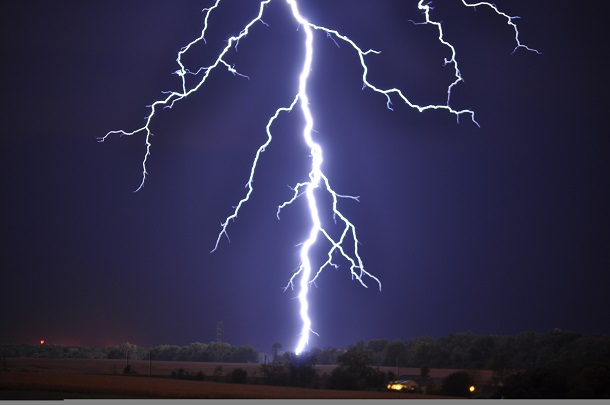Let’s get this out of the way right now. Electricity is dangerous. It hurts when you get zapped. Short circuits can burn down your house. This is serious stuff, ok?
You know I have to say stuff like that to satisfy the bloodsucking lawyers, right? Now, we can get down to business.
A little bit about volts, amps, and watts
I have yet to find an article that really explains volts, amps, and watts in a way that a normal person can really understand. I even tried to write one. That’s a good article, but it could be better. And in the context of answering the question “will this kill me” it’s not super helpful.
Broadly speaking there are three kinds of voltage you’re likely to encounter. 110 volt is what comes out of a normal outlet in North America. Much of the rest of the country has outlets that supply 220 volts, though. Here in the US 220 volt outlets are reserved for things like air conditioners, large appliances, and home EV chargers. The third kind is 5 volts, which is what comes out of USB ports.
You would be forgiven for thinking, “well I got zapped pretty bad on a 110 volt outlet once, getting zapped on a 220 is probably twice as bad.” And yeah, it can be twice as bad. All other things being equal, a 220 volt shock is going to be twice as dangerous as a 110 volt one. But really it’s more about the amps, and therefore the watts.
Your circuit breakers are measured in amps. The amperage rating on the breaker is the amount of amperage that can pass through it. If more amperage passes through the breaker than it’s rated for, it will trip. That’s for safety, so that the current doesn’t melt the wires and cause a big old fire.
What about watts? You said watts
Watts are a great way to measure electricity because watts, simply, are volts multiplied by amps. So you get one number that tells you both. A typical fast charger for a phone is 5 volts, 2.1 amps. Multiply that and you get 10.5 watts. Simple as that. Watt measurements are really the answer to the question of “will this kill me?” because they show both volts and amps. A 500 volt, 1 amp current is 500 watts. No question this will sting a bit if it hits you. But, it’s not going to sting as much as a 500 volt, 50 amp current which is 25,000 watts. Chances are that will do you in.
In a 20 amp circuit in the US, the maximum wattage is 110 x 20, or 2,200 watts. This is largely painful, but not likely to kill you. When you touch a hot wire, the amount of electricity you get is dependent on what’s being supplied, limited by the resistance of your skin. Skin isn’t a terribly good conductor of electricity, which is good. It means you don’t get too much of a jolt.
Talking about 220 volt connections
A typical 110 volt connection has three wires: a hot, neutral, and ground. In the US, a 220 volt connection generally has four wires. Unlike 110 volt which connects to a single breaker, 220 will generally connect to a pair of breakers so it can supply 110 volt on two different legs, plus a neutral wire and a ground.
The real question of whether a 220 volt connection is more dangerous than a 110 volt one comes back to watts. If you have a 110 volt, 20 amp circuit, giving you 2,200 watts, that will sting. But if you have a 220 volt circuit with two legs of 10 amps, that’s still 2,200 watts so it’s not more dangerous than a 110 volt one. However, it’s true that most home circuits using 220 volt are on at least dual 20 amp circuits so, yes, they’re more dangerous. Depending on what you’re running, it could be a lot more dangerous. If your air conditioner runs off dual 100 amp circuits, that’s 44,000 watts and that’s going to send you to the hospital at least.
If 220 volt is more dangerous, why is it more common in Europe?
People ask this all the time and again the answer comes down to watts. A 220 volt device in Europe will pull half the amps of the same device using 110 volts in the US. So, the wattage measurements are the same. As a result, the circuit breakers can be rated for lower amperage, keeping everybody safe.
220 volt plugs used in much of the rest of the world also have fuses right within them, keeping you and the equipment even safer. The downside is that the plugs themselves are bigger, almost comically large compared to US plugs.
Bottom line…
Don’t shock yourself. Be careful. But know if you’re working with household electricity, it will probably hurt but not kill you if you get an accidental shock. It’s different in an industrial setting, but then you shouldn’t really work on industrial stuff unless you’re a licensed electrician.
This article is brought to you by Solid Signal. Solid Signal is your home for all sorts of tools and accessories for professionals and those folks who want to be professionals. Shop at SolidSignal.com for everything you need! If you need help deciding, call us during East Coast business hours. The number is 888-233-7563. If it’s after hours, fill out the form below and we’ll get back to you, usually within one business day.





